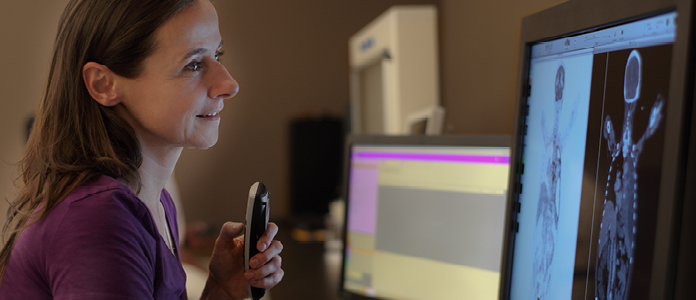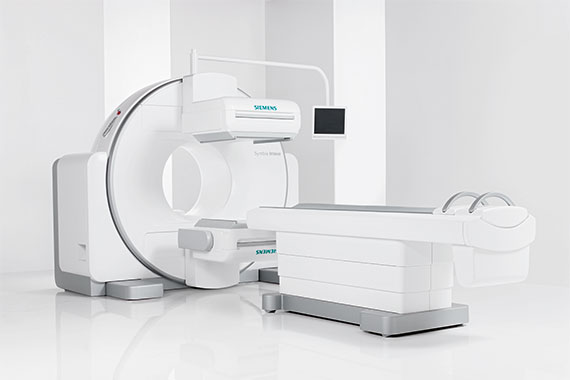Scintigraphy is the measurement and imaging of the radioactively labeled substances (radiopharmaceuticals) described above in the body using a gamma camera to visualize organ function. This takes the form of individual images (e.g., thyroid scintigraphy), whole-body images (e.g., skeletal scintigraphy), or serial (dynamic) images (e.g., renal scintigraphy). Scintigraphy can be used to examine the metabolic function of virtually all organ systems.
Depending on the organ to be examined, scintigraphy (or SPECT) requires a different accumulation time: in bone scintigraphy, it takes about two to three hours for the radioactive substance to accumulate predominantly in the skeletal system; in thyroid scintigraphy, it takes only about 20 minutes. For some examinations, such as checking for side-separated renal function, the scintigraphy begins immediately after the tracer is administered.
Certain examinations require special preparation, about which patients are informed in detail by the referring physician or when making the appointment. For example, cardiac scintigraphy, which is used to diagnose coronary heart disease (CHD, precursor of a heart attack), requires (pharmacological) stress on the heart. This can be used to determine whether blood flow to the heart muscle is reduced in a certain area under stress conditions (stress, physical exertion). In cases of already known and successfully treated CHD, this examination method is a reliable (non-invasive) option for follow-up.
The nuclear medicine examinations are performed by Prof. Hoffmann.

- SPECT/CT Myocardial Perfusion Scan
- Somatostatin receptor scan
- Scintigraphy thyroid gland
- Scintigraphy parathyroid gland
- Skeletal scintigraphy with SPECT/CT
- PSMA Scan
- Neuroendocrine tumor scintigraphy
- Myocardial scintigraphy
- Scintigraphy salivary glands
- Scintigraphy sentinel inguinal lymph nodes
- Scintigraphy sentinel neck lymph nodes
- Scintigraphy sentinel axilla
- Scintigraphy renal function
- Scintigraphy urinary tract
- Scintigraphy brain function
- SPECT/CT Lung perfusion scintigraphy
- Lung scintigraphy
- Bone density DEXA
- Iodine 123 whole body scintigraphy after rhTSH stimulation.

